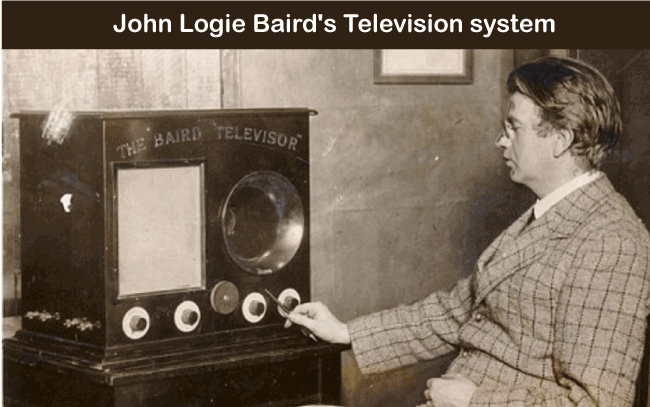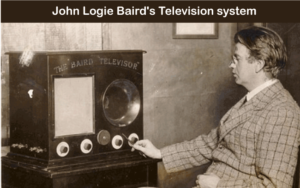
Television Innovation History
The television is one of the most important inventions in our lives. It has a huge influence on our everyday life, and it is constantly evolving.
The first televisions were tiny and colorless, but eventually televisions with giant screens started to be produced. Channels multiplied, and antennas disappeared from our homes.
The invention of the television
The invention of the television was one of the most important innovations in modern technology. It allowed people to see things that were previously impossible to see, and it has shaped our world in many ways. The television has made it possible for us to experience countless moments in history and culture, from the Moon landing to M*A*S*H.
The first device that we would recognize as a television was invented by John Logie Baird. This mechanical device used a spinning Nipkow disk to capture images and convert them into electrical signals that could then be transmitted over radio waves. The receiving device would then use its own Nipkow disks to create a replica of the original image.
However, Baird’s mechanical television was not an immediate success. Its low-definition images flickered badly on receiver screens a few inches high, and programs were simple and repetitive.
The invention of the color screen
After John Logie Baird invented the first TV, he started work on creating a color television. He was able to produce the first viable, hybrid, field-sequential color television system in 1940. This system used red and blue filtered glass to add color to the black-and-white kinescope TV broadcasts.
Despite the success of Baird’s mechanical television, electronic systems quickly became more popular. Philo Farnsworth and Vladimir Zworykin both developed television systems that used cathode ray tubes to display images. Zworykin’s system was later purchased by RCA, which began telecasting in color in 1953.
Until then, most televisions were still black-and-white, and viewers had to use a special kinescope to view color broadcasts. The introduction of GE’s relatively compact and portable Porta-Color TV set in 1966 made color televisions more appealing to consumers. This led to the rapid growth of television sales, and eventually, a switch from black-and-white to color.
The invention of the remote control
The invention of the remote control was an important step forward in television technology. It allowed viewers to change channels without having to stand up and use a dial. It also allowed viewers to watch different programming at the same time.
The first mechanical system was developed by John Logie Baird, who wowed audiences with his demonstrations in 1927. His invention used a spinning disc and a cathode ray tube to produce an image. Baird would later create an electrical system that could display color.
Vladimir Zworykin patented his work on a color TV system in 1929, but it took twelve years for the National Television System Committee to agree on a standardized broadcasting system. This paved the way for tube televisions, which were able to show HD images at affordable prices. These televisions are now being replaced by flat-panel TVs, such as LCD and plasma.
The invention of the tube television
Until the advent of flat screen TVs, television sets used cathode ray tubes. These CRTs, which are called “bewbs” in the UK, produced a graphical representation of electrical signals on an oscilloscope-like display screen.
These mechanical systems were limited in resolution, but they were able to transmit images over long distances. This allowed people to watch TV programs in real time. The first live coast-to-coast commercial television broadcast was in 1951.
Farnsworth patented over 100 inventions, including the first “cold” cathode ray tube, an air traffic control system, and a baby incubator. He also worked on nuclear fusion, but his experiments were cut short by poor health.
The development of all-electronic televisions, however, signaled the end of mechanical systems as the dominant form of television. By 1935, low-definition electromechanical television broadcasts had ceased except at stations run by public universities. By the end of World War II, the Federal Communications Commission had standardized television engineering standards, making it possible to license commercial stations.
The invention of the LCD television
The invention of the television is a huge step forward for human communication and interaction. It allows people to see live images of events and news from across the world on their television sets. It can also be used for entertainment and educational purposes.
The first TV was a mechanical device created by John Logie Baird. He demonstrated it in a London department store in 1925. His mechanical TV system used a spinning Nipkow disk, which captured image data and converted it to electrical impulses. The signals were then transmitted over radio waves to a receiving device, which would display the image on its screen.
Philo Farnsworth is often credited with the invention of modern television, but Vladimir Zworykin also deserves some credit. The two inventors worked on TV simultaneously and were often competing against each other. Eventually, RCA – the company that dominated the NBC television network – invested $50 million in Zworykin’s work to develop a fully electronic TV camera and receiver.
The invention of the LED television
When it comes to TV technology, there are two main types on the market – LCD and LED. Both types offer great benefits but LED TVs have the edge over LCD when it comes to viewing angles and colour precision.
Aside from the fact that LED TVs are much thinner and lighter than CRTs, they also use less power. This is because LEDs are more energy efficient than the cold cathode fluorescent lamps that are used in most LCD TVs.
The invention of the LED television was a significant step forward for flat-screen televisions. LEDs are small diodes that light up when electricity passes through them. They can be made in many different shapes and sizes, which makes them perfect for large screens. For example, a JumboTron was an enormous screen that was used in arenas and Times Square. The latest TVs are 8K and feature 8,000 pixels going across the screen horizontally and over 4,000 pixels vertically.


